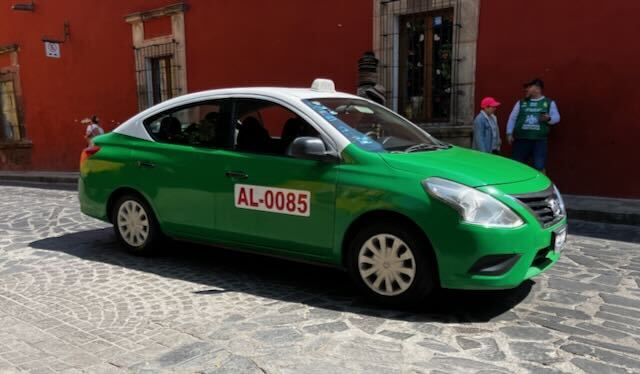 Español
Español
March 10, 2024
by Bill Harrison
Lime green taxis abound in San Miguel, roaming the streets like over-eager puppies looking for treats. Kamikaze motorcycles careen through the sluggish Centro traffic, their ear-blasting motors standing in for munitions. Buses toddle along on their mysterious routes. Tourists wander the streets in clumps, searching for restaurants they saw on TripAdvisor. A few brave bicyclists pant their way up the crazy hills. But there are two forms of transportation missing from this picturesque city: wheelchairs and baby strollers.
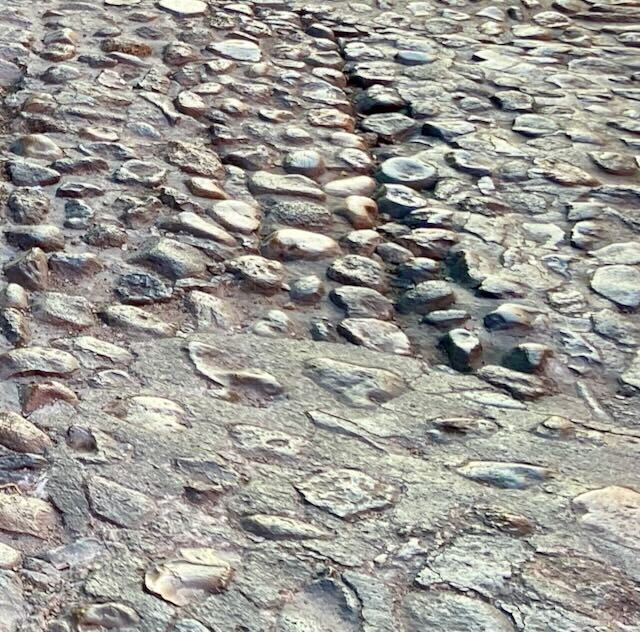
I first noticed this anomaly during our early-2023 sojourn. I was out for a stroll in San Antonio one morning when I saw the first—and so far only—wheelchair I'd ever spied in SMA. Its occupant was an elderly gentleman perched on what passes for a sidewalk around here. His back was against the orange wall of a building; the wheels of the chair were no more than two inches from the precipice. I wondered how he maneuvered that thing anywhere in this disability-unfriendly town.
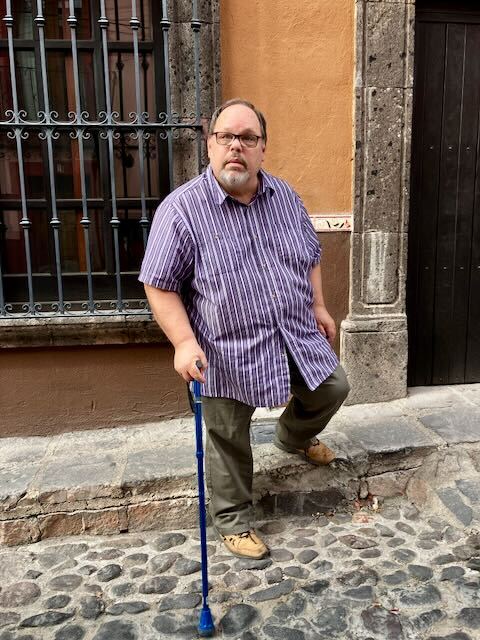
And I've now seen precisely two people pushing prams, both of them on the relatively wide and smooth sidewalk of Calle Zacateros, south of Umarán—both of them empty. Any baby bouncing along in a stroller in SMA would undoubtedly need to see a chiropractor every week to put its little vertebrae back in order.
Unless you grew up here or are a mountain goat, walking the streets of San Miguel is a challenge under the best of circumstances. In order to preserve the colonial feel of the city, most streets are still made of traditional cobblestone. For non-natives and non-ruminants, these uneven stones are a real pain in the foot. Walking on them requires step-by-step vigilance, every move a potential ankle-twister. Unlike streets paved with asphalt or concrete, the stones have absolutely no "give" to them. Each belabored tromp requires careful consideration.
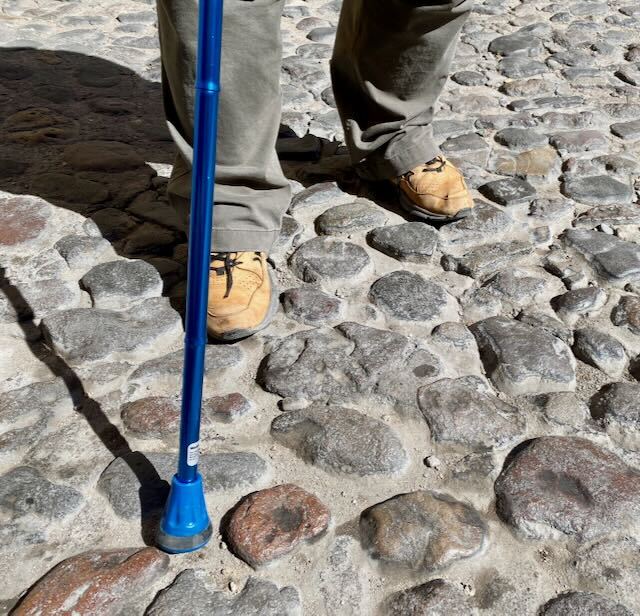
And could someone please explain those ridiculous stone paths on either side of the streets? Why did the city bother installing those treacherous sidewalks? My theory is that those death traps exist solely for the entertainment of native San Migueleños. I can imagine a drinking game for boring afternoons: "Mira, another gringo bites the dust! Más tequila!"
Between the cobblestones and the skimpy sidewalks with their steep drop-offs every ten feet, pushing anything with wheels is nearly impossible. The cobblestones would jar your bones; you'd be falling off sidewalk cliffs constantly. The Americans With Disability Act people could have a field day down here.
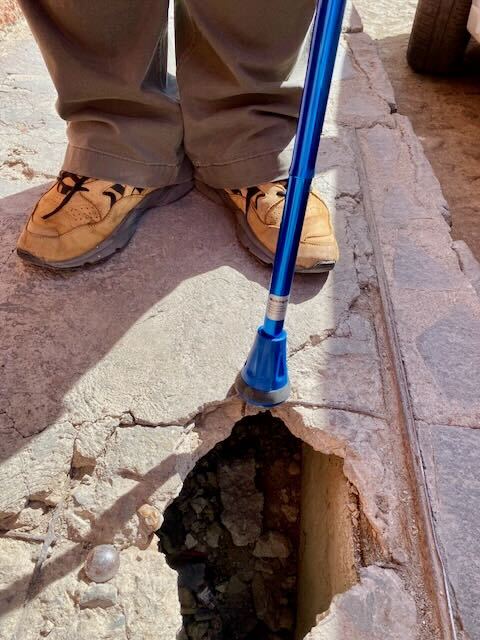
What was a demographic quirk last year has now become personal. While I've long outgrown baby buggies and don't need a wheelchair, I am now someone who (temporarily, I hope) uses a cane to get around. It's not a pretty sight. The new appendage helps keep me ambulatory, but on cobblestones and craggy sidewalks I now have to worry where I place three legs instead of two. One false move could result in a face plant, which would really not be pretty.
Let me be clear: I'm not blaming San Miguel for any of my woes. If you or I want to spend time here, we have to accept the city as it is—hills, cobblestones, puny sidewalks and all.
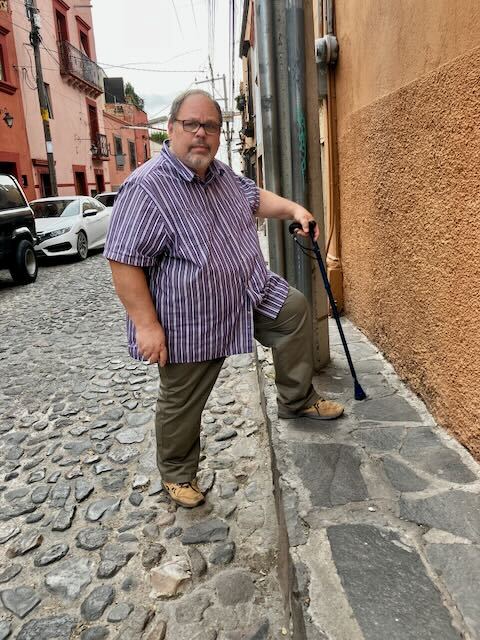
The need to accept things as they are reminds me of a story my mother used to tell about riding the cable cars in San Francisco several decades ago. As the vehicle whipped around a corner, a wail of complaint arose from some of the tourists. The operator got on the PA and said, "You wanted to ride it. Now you hold on to it." Similarly, in Chicago, I've heard people who move to the area surrounding Wrigley Field moan about the traffic. The stadium has been there forever. No one insisted you live there.
So if you see an old guy hobbling along the cobblestones with a shiny blue cane, give me a wave and watch me try to smile back through gritted teeth.
**************

Bill Harrison is a psychotherapist, writer, and former professional bass player. His memoir, Making the Low Notes: A Life in Music, was published by Open Books Press in June 2023. His other work can be read in After Hours, Allium, Another Chicago Magazine, Bass World, Counseling Today, The Intermezzo, Sledgehammer, Under the Gum Tree and elsewhere. Bill lives in Chicago with his poet/therapist wife and a rambunctious Bengal named Jazzy. All three of them spend part of the year in San Miguel de Allende.
**************
*****
Please contribute to Lokkal,
SMA's online collective:
 ***
***
Discover Lokkal:
Watch the two-minute video below.
Then, just below that, scroll down SMA's Community Wall.
Mission

Visit SMA's Social Network
Contact / Contactar

